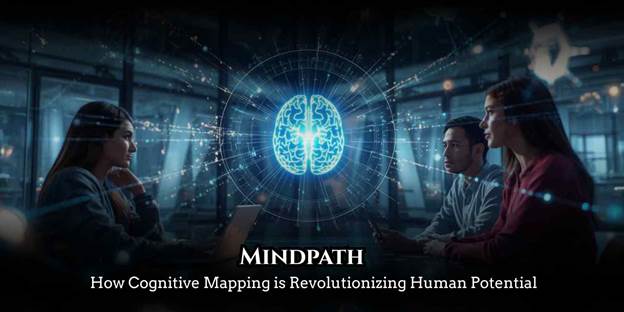In today’s fast-evolving world, the concept of mindpath is reshaping how humans think, learn, and achieve their full potential. As education and neuroscience converge, mindpath emerges as a groundbreaking framework that connects cognitive mapping, emotional intelligence, and adaptive learning. Unlike traditional learning systems, mindpath leverages the natural flow of human thought processes to unlock creativity and critical reasoning.
This article explores how mindpath is revolutionizing modern education through cognitive mapping, enhancing memory retention, and fostering lifelong learning. We’ll dive into the history, applications, and benefits of mindpath, discover how it enhances emotional and intellectual growth, and discuss the challenges educators face in integrating it into real-world settings. The future of learning lies in understanding how mindpath can bridge human potential with artificial intelligence to create a smarter, more intuitive educational experience.

Understanding Mindpath and Cognitive Mapping
The term mindpath refers to the mental route or pathway through which information travels within the brain, forming cognitive maps that link knowledge, experiences, and emotions. These pathways determine how individuals interpret, recall, and apply information in real life. In neuroscience, mindpath is seen as the connection between neural circuits responsible for decision-making, memory, and problem-solving.
Cognitive mapping, a secondary keyword, plays a crucial role in this process. It represents how our brains visually and logically organize information. Together, mindpath and cognitive mapping form the foundation for adaptive and personalized learning systems that mirror the way the human brain naturally functions.
The Origins and Evolution of Mindpath in Education
Education has traditionally focused on rote memorization and standardized testing. However, as cognitive science evolved, researchers discovered that the human brain learns best through association and pattern recognition. The mindpath approach emerged from this understanding. By mapping how the brain connects information, educators could design more effective teaching strategies based on neural learning pathways, another secondary keyword.
Today, mindpath is being integrated into AI-powered educational platforms, allowing personalized learning experiences that adapt to individual thinking styles. This evolution marks a shift from one-size-fits-all education to human-centric cognitive learning.
The Importance of Mindpath in Unlocking Human Potential
The significance of mindpath extends beyond education it’s a tool for self-awareness, creativity, and personal development. It enhances how individuals process information and adapt to new challenges by improving:
- Critical thinking: Strengthens the ability to analyze and synthesize information
- Memory recall: Reinforces neural links for faster and deeper retention
- Problem-solving: Encourages multi-perspective approaches
- Emotional intelligence: Builds awareness of emotions and empathy through connected thought pathways
By understanding their mindpath, learners can transform knowledge into wisdom and apply it effectively in real-world contexts.
Key Benefits of Mindpath and Cognitive Mapping
The mindpath model offers transformative benefits in cognitive performance and emotional growth. Some of the most notable include:
- Personalized learning experiences tailored to individual cognitive styles
- Faster knowledge retention due to visual and neural mapping of information
- Enhanced creativity through cross-linking of ideas and concepts
- Improved emotional resilience via awareness of mental and emotional states
These benefits demonstrate how mindpath redefines the future of education by aligning learning with the natural rhythm of the human brain.
Related Article: Mobility Flow for Stress Relief and Mindful Movement
Real-World Applications of Mindpath in Education and Beyond
Several modern platforms are using mindpath frameworks to power AI-driven learning. For example:
- Adaptive e-learning tools track a learner’s cognitive progress and adjust difficulty levels accordingly
- Mind-mapping software visualizes cognitive pathways to enhance understanding and recall
- Emotional intelligence training programs use mindpath models to help students regulate emotions and improve social awareness
These applications prove that mindpath is not just a theory it’s a practical framework revolutionizing how humans acquire and apply knowledge.

Challenges in Implementing Mindpath-Based Learning
While the mindpath approach offers immense potential, it also faces several implementation challenges:
- Technological limitations: Not all institutions have access to AI-driven cognitive tools
- Lack of awareness: Educators and policymakers often lack understanding of mindpath-based methodologies
- Data privacy concerns: Cognitive tracking systems must handle sensitive brain data ethically
- Training gaps: Teachers need specialized training to use cognitive mapping effectively
To overcome these barriers, institutions must invest in research, innovation, and educator training focused on neural learning pathways and human-centered design.
Related Article: Insight Mental Wellness: Building a Stronger, Healthier Mind
The Future of Mindpath and Human Potential
As neuroscience, AI, and education continue to converge, mindpath will play a critical role in shaping a more intelligent and empathetic society. Future classrooms may use brain-computer interfaces to monitor learning patterns, while AI tutors adapt lessons in real-time based on each learner’s mindpath. This integration could lead to:
- Lifelong learning ecosystems that evolve with the learner
- Human-AI collaboration grounded in cognitive empathy
- Optimized creativity and innovation through personalized cognitive frameworks
The future of learning through mindpath will redefine what it means to be human where knowledge, emotion, and technology merge into one seamless system of growth.
Conclusion
The concept of mindpath marks a turning point in human learning and self-evolution. By combining cognitive mapping, emotional intelligence, and adaptive AI systems, we can revolutionize how people think, feel, and grow. The mindpath framework empowers individuals to unlock their potential through deeper understanding and mindful learning. As education continues to evolve, embracing mindpath will be key to building a future where technology enhances not replaces human intelligence. Explore how mindpath can transform your learning journey and lead you toward limitless intellectual growth.